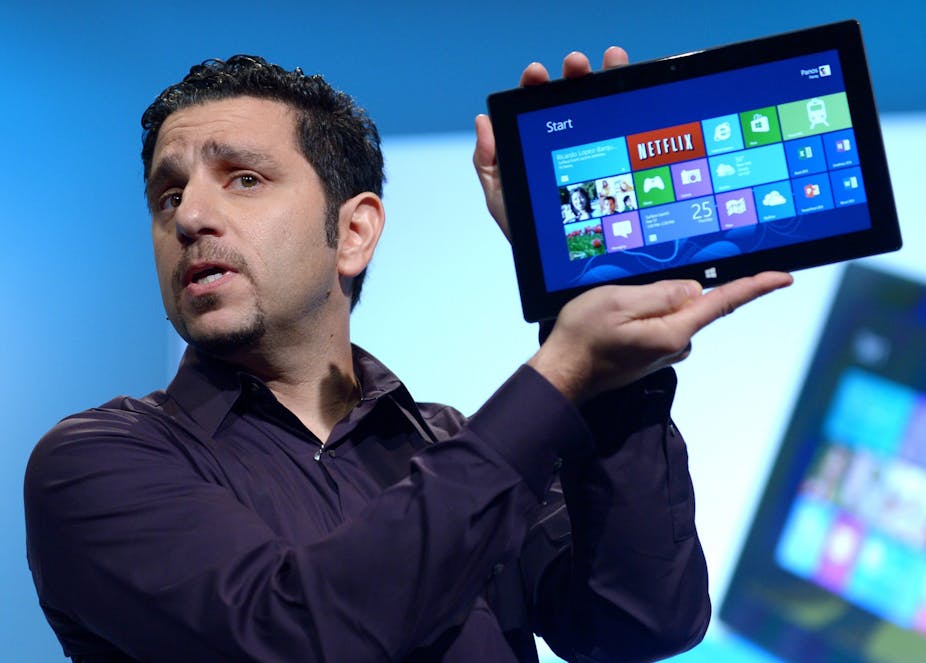To say that Microsoft is struggling at the moment is an understatement. The search for a new CEO is not going well, Microsoft mobile phones are still failing to capture any significant mind and market share and worse, at some point this year, Apple’s PCs, tablets and phones will be out-selling Windows.
Where it went wrong
Of the many missteps that could be laid at Microsoft’s door, the move to Windows 8 ranks as one of the biggest. Driven by a forgivable logic, Microsoft wanted to produce an operating system that unified its PC, tablet and phone operating systems. The seamless integration of devices would appeal to the market and help Microsoft regain the ascendancy from Apple and Google. This may have worked if Windows 8 and the user interface that underpinned it had been less unattractive or more familiar. But since its release 14 months ago, Windows 8 sales are 50% of those of Windows 7 after the same period.
Will Windows 9 stem the PC sales declines?
In what is now a desperate move to change its fortunes, Microsoft is rumoured to be rushing the release of Windows 9, code-named “Threshold” to 2015. Little is known about the changes that will be in the release although commentators are already theorising that Microsoft will try and wind back the tablet and touch features of the desktop version of Windows to something looking more like Windows 7. The sense however is that this is too little and far too late.
2013 saw the worst declines in PC sales of any previous year, falling by 10%. Although tablet sales are partly responsible for some of this decline, another important factor is consumers and businesses holding on to their existing hardware for longer through a lack of incentive to upgrade or change.
For Microsoft, the problem has been further exacerbated by the fact that Apple PCs have actually seen an increase in sales, especially in the US.
What makes people use a particular technology?
The factors that determine whether a consumer or business will use a given technology are complicated and researchers have developed a range of models to try and determine what drives its successful use. One such model, proposes factors such as the amount of effort involved in a technology’s use, its cost, the habits of the user and the technology’s performance.
Of equal importance however, are social influence and hedonic motivation. In other words, the more people within your social sphere that are using a technology and also the more pleasurable the technology is to use, the more likely you will be to use it.
From the moment Windows 8 was launched, it has largely been reviewed negatively. For the desktop user, there were no benefits delivered in changing to a user interface that emphasised a tablet metaphor. In fact, the opposite was the case, it just got in the way.
Worse still, elements of the interface were simply ugly. Examples of this included the capitalisation of menu text and the washed out borderless interfaces that found their way into the Microsoft applications adopting the Windows 8 user interface look and feel. In short, it became less pleasurable to use than Windows 7, and social influencers were largely negative about the product.
The challenge facing Microsoft to turn around the negative sentiment associated with Windows 8 is considerable. Speeding up the release of Windows 9 may help, but only if Microsoft has made substantial changes to the user interface.
The other hurdles for Microsoft

From a business user perspective, there are additional problems that Microsoft faces. The first is a large installed base of businesses still using Windows XP.
According to Net Applications 35% of PC desktops globally were still running Windows XP. In deciding what to upgrade to, it is extremely unlikely that companies would choose to move to Windows 8 which means that Windows 7 is likely to be the dominant PC operating system for the next decade at least.
For large organisations, the costs involved in migrating platforms are mainly in ensuring that all the applications they use work on a particular platform and the training and support costs of their users. Because of the poor reception for Windows 8, there will be less incentive for other software companies to rush to support it, preferring instead to concentrate on Windows 7.
A further wildcard in the PC market are platforms such as Google’s Chromebook which enjoyed a surge in sales last year. It is possible that as businesses increasingly move to a software-as-a-service model, especially one that is web-based, Chromebooks will become increasingly popular replacements to desktop PCs.
What next?
Even if Windows 9 helps to reverse the negative impact of Windows 8, it is unlikely to stem the declines in the PC market. Microsoft will be concentrating its efforts on succeeding where it matters now, in the mobile market.

